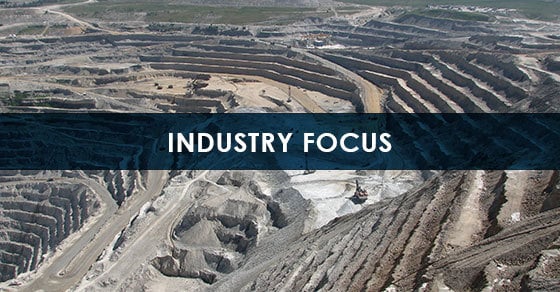After a year marked by trade disputes and declines in manufacturing, the copper industry is hoping that 2020 will be the start of a turnaround for the red metal; while experts don’t anticipate a quick return, long-term forecasts agree that several factors will push demand for copper to record highs in the coming years.
Market Influencers
While copper market dynamics are complex, there are a few developing and ongoing trends that stand out on both the positive and negative side of copper supply and demand.
Factors Pushing for More Copper
There are several factors positively influencing the long-term demand for copper. Copper is recognized as an essential component in the technologies that will power the more sustainable future the world is working toward. In The Copper Industry: Our Contribution to Sustainable Development, the International Copper Association states, “Copper and the copper industry are critical to sustainable development, and to a higher quality of life.”
As the ongoing quest for a more sustainable society heightens, copper looks to be at the center of it all. Major trends pushing demand for copper include:
Electric Vehicles & Charging Stations
Electric vehicles and the infrastructure necessary to support their widespread adoption have been taking up headlines in the copper industry for some time now.
Copper usage is significantly more intensive in electricity-powered vehicles compared to combustion engines. According to the Copper Development Association, copper requirements for different types of vehicles are staggering when compared to traditional vehicles; a car operating on a conventional internal combustion engine requires anywhere from 18-49 pounds of copper. By comparison, hybrid electric vehicles require roughly 85 pounds, plug-in hybrid vehicles 132 pounds, and battery electric vehicles 183 pounds. A battery electric bus contains as much as 814 pounds of copper.
Further, copper is used in far more than just the vehicle and battery itself when it comes to the changing transportation market; charging stations and infrastructure to support an electric vehicle fleet demand more copper as well.
As the trend toward vehicle electrification intensifies, the criticality of copper’s role will continue to rise. The Copper Development Association predicts that demand from the electric vehicle sector will call for another 1,700 kilotons of the metal by 2027.
Copper in Smart Homes
Research from the International Copper Association (ICA) revealed an increase in demand for copper related to the surge in smart home technologies.
Copper is widely used in smart home components from wires and switches to batteries, routers, and more. The ICA study predicts that demand for copper in this sector could more than double by just 2021.
This trend will likely be heightened as more technology-driven millennials enter into home ownership.
Infrastructure Demands
Copper is a cornerstone of infrastructure, used in everything from plumbing and electricity, to heating, cooling, and so much more. Globally, growing trends of urbanization, increased construction activities, and developing nations, as well as the ongoing adoption of renewable energy, are all expected to call for more copper.
Aging infrastructure in the US has long been a struggle for Americans, and efforts focused on repairing, updating, and expanding the nation’s framework are on the rise. China has also been putting an increased emphasis on infrastructure in recent years.
Copper Market Challenges
Though long-term demand looks reliably solid, not everything is coming up roses for copper; the market faces a few challenges.
Coronavirus
The degree to which the Coronavirus will impact the world economy is not yet clear, but with China as the largest copper consumer, the outbreak has already impacted the copper market.
China has shut down several factories and shipping ports in an effort to contain the spread of the virus. An inability to unload excess sulfuric acid supplies is limiting smelters and reducing demand for concentrates. Outside of China, precautionary measures have curbed shipments into the country.
Only time will tell the full extent of the virus’s impact.
Copper Resources
The copper industry faces a struggle as demand balloons, according to Ahead of the Herd’s Richard Mills. Major copper discoveries are declining, as are ore grades. As operating costs rise, declining ore grades make getting copper less economically feasible.
Add to this that most economically attractive copper supplies are in risky locations wrought by social unrest, geopolitical issues, and water scarcity, and copper extraction becomes even more challenging. Several major mines are also either reaching their end of life, or in the process of transitioning to different ore bodies, taking significant amounts of copper out of production, with many industry experts anticipating a deficit on the horizon.
In an interview with Investing News, one copper industry CEO commented on the state of things:
“Simply stated, while global consumption demand is increasing, the availability of viable production opportunities necessary to meet that demand is not occurring, and that condition is not expected to change.”
Another commented, “What you’re seeing is a lot of competition for a few remaining resources regarding copper deposits out there….”
Conclusion
Copper is set to be at the center of the world’s more sustainable future, making everything from electric vehicles and smart homes to infrastructure improvements possible. And while experts anticipate substantial demand growth, some factors will challenge the market, including declining ore grades, and the uncertain impact of the Coronavirus.
FEECO supports the copper industry through custom copper processing equipment, including pugmill mixers, agglomerators, and material handling equipment, as well as extensive parts and service support and process development capabilities. For more information, contact us today!


